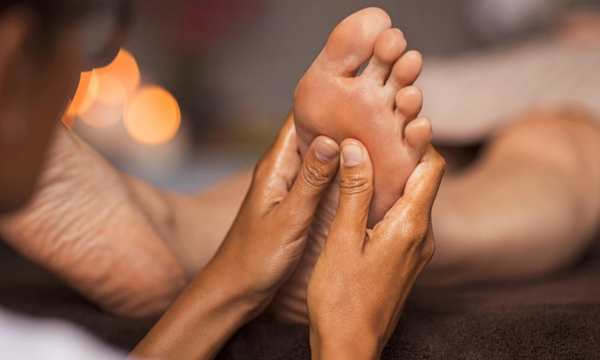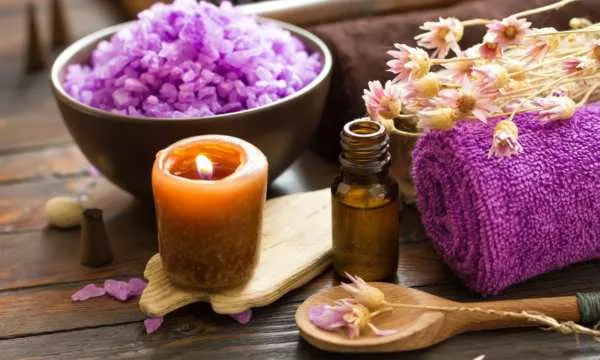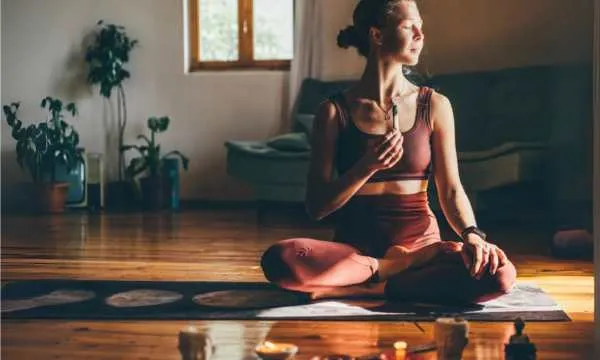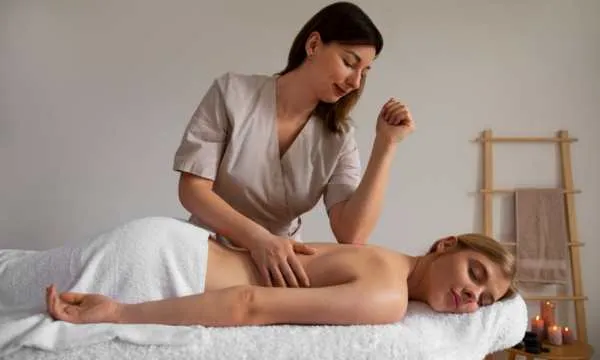Have you noticed how self-massage can provide immediate relief after a busy day of client appointments?
Ad
Often, we dedicate all our care to others but forget to set aside time for ourselves.
Practicing self-massage is an invitation to self-care, capable of renewing your energy and making life easier for those who help others relax for a living.
Ad
Throughout this article, you’ll find practical self-massage tips that can transform your moments of rest.
Self-Massage on Hands and Fingers
Self-massage on the hands and fingers is a great starting point for those seeking relaxation.
Ad
In daily life, massage therapists use their hands a lot, so there’s nothing better than repaying this effort in a simple and effective way.
- Press one finger at a time, making circular and gentle movements with the thumb of your other hand.
- Massage the palm, identifying sensitive spots and applying light pressure.
- Work between the fingers with light pinching.
- Make circular motions on the back of the hands.
- Repeat the routine for two to three minutes on each hand.
Don’t forget to perform these self-massages especially after a long sequence of sessions. This way, your hands stay healthy and ready for daily challenges.
Practicing self-massage regularly is a simple act of self-care that makes a long-term difference, allowing you to perform better in your profession.
Pressure on Shoulders and Trapezius
Now that your hands are revitalized, let’s turn your attention to the shoulders and trapezius. We know how these muscles can store tension, especially after hours of appointments.
In this sense, trying self-massage in the shoulder area can be a real treat for your body.
- Rest the opposite hand on your other shoulder.
- Apply gentle pressure, making circular motions with your fingers over the trapezius.
- Explore different spots, switching hands to the opposite side.
- Adjust the intensity to your comfort, prioritizing relaxation.
- Repeat for two minutes on each side.
These shoulder massages are ideal for those times when only you can give yourself this attention. By making this habit part of your routine, you’ll soon notice the results: less discomfort, more ease, and renewed energy to continue your work.
Little by little, these techniques show how taking care of yourself is essential to take better care of others.

Shoulder-and-neck-massage-(Source-Google)
Self-Massage on the Neck
After relaxing your shoulders, it’s time to focus on your neck. With stress buildup, it’s natural to feel a bit stiff in this region.
- Use the tips of both hands’ fingers.
- Make circular motions at the base of the skull, applying light pressure.
- Move your fingers down toward the shoulders, always using gentle movements.
- Focus on tense spots without overdoing the pressure.
- Do this for three minutes, always respecting your limits.
Regular self-massages on the neck not only relieve tension but also help stimulate greater freedom of movement. Include these relaxation techniques before bed or upon waking and notice how much your well-being can improve.
Remember: self-massages are daily opportunities for self-care, improving your quality of life and your client service experience.
Gliding on Forearms
Any intense routine calls for recovery time, right? At this point, self-massages on the forearms become essential for you, the massage therapist.
- With your thumb, glide along your forearm from wrist to elbow.
- Alternate between straight and circular movements to cover the whole muscle area.
- Also work the inner side of the forearm.
- Apply these movements for about two minutes on each arm.
- Use cream or oil if you like, to ease the glide.
Frequent self-massage in this region helps prevent discomfort and brings a feeling of lightness to the arms, making your daily activities more pleasant.
Self-Massage on Legs and Feet
Continuing our journey of self-massage, we arrive at the legs and feet—the true supports of a massage therapist’s routine.
After a long day, there’s nothing better than dedicating a moment just to yourself, using massage techniques on the feet with gentle, circular movements.
- Start with the sole of your foot, massaging in circular movements with your thumb.
- Spread the self-massage between the toes and on the top of the foot.
- Slowly move up the legs, gliding your hands from ankles to knees.
- Gently press the most fatigued areas.
- Perform the movements for three minutes on each leg.
This kind of care improves circulation, reduces fatigue, and provides immediate relief. Adopt this habit and feel lighter at the end of every shift.
Combining these self-massages allows you to move forward with renewed energy and a touch of self-care in every step.

Foot-massage-technique-(Source-Google)
Facial Massage for General Relaxation
And how about ending with a special moment just for your face? Facial self-massage is an excellent way to relax and renew your energy.
- With your index and middle fingers, make circular movements on your temples.
- Glide to your forehead, massaging from the center outward.
- Continue on your cheekbones with gentle pressure, always using circular movements.
- Focus on tense areas, keeping your touch gentle.
- Finish with light tapping to stimulate circulation.
Facial massages relieve tension, help smooth out signs of tiredness, and bring you well-being at the end of a busy day.
Include facial self-massage in your routine and discover how you can end the day feeling refreshed and calm, ready for new challenges to come.
How to Prepare the Environment for a Relaxing Self-Massage
A suitable environment turns self-massage into an even more rewarding experience.
- Choosing a peaceful spot is the first step to unlocking the full potential of self-massage.
- Organize the space with cushions, clean towels, and essential oils to create a relaxing atmosphere.
- Soft music can also help you unwind and detach from everyday worries.
- Silence your phone and block out distractions to focus just on you and the moment.
- Sit or lie down comfortably, taking a deep breath before you begin.
- Use apps that suggest self-massage routines to make the process even easier.
Remember to have everything within arm’s reach before starting to avoid unwanted interruptions.
Preparing your space is a fundamental part of the ritual, making these moments truly revitalizing for body and mind.
Conclusion
Self-massages are a source of renewal, well-being, and balance for those who care for many people every day.
By incorporating these self-massage techniques into your routine, you value your own health and enhance your service potential, strengthening not only your body but also your mind.
Remember: dedicating a few minutes to self-care isn’t a luxury, but a necessity for those who have chosen to care for others. Whenever possible, return to this article to revisit these techniques and keep the habit present in your life.
Your body will thank you. And, more than that, your clients will also notice the difference in a professional who takes care of themselves with care and attention.



